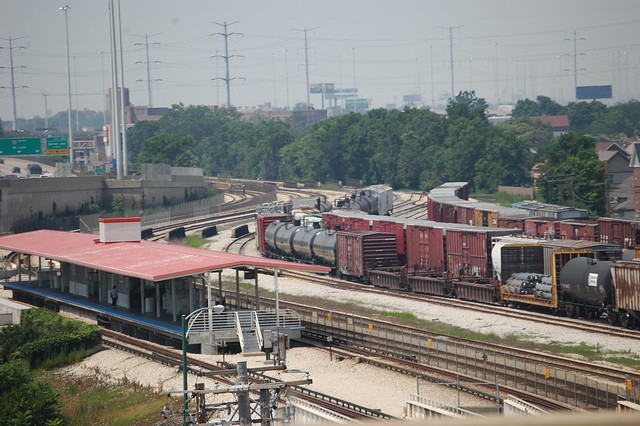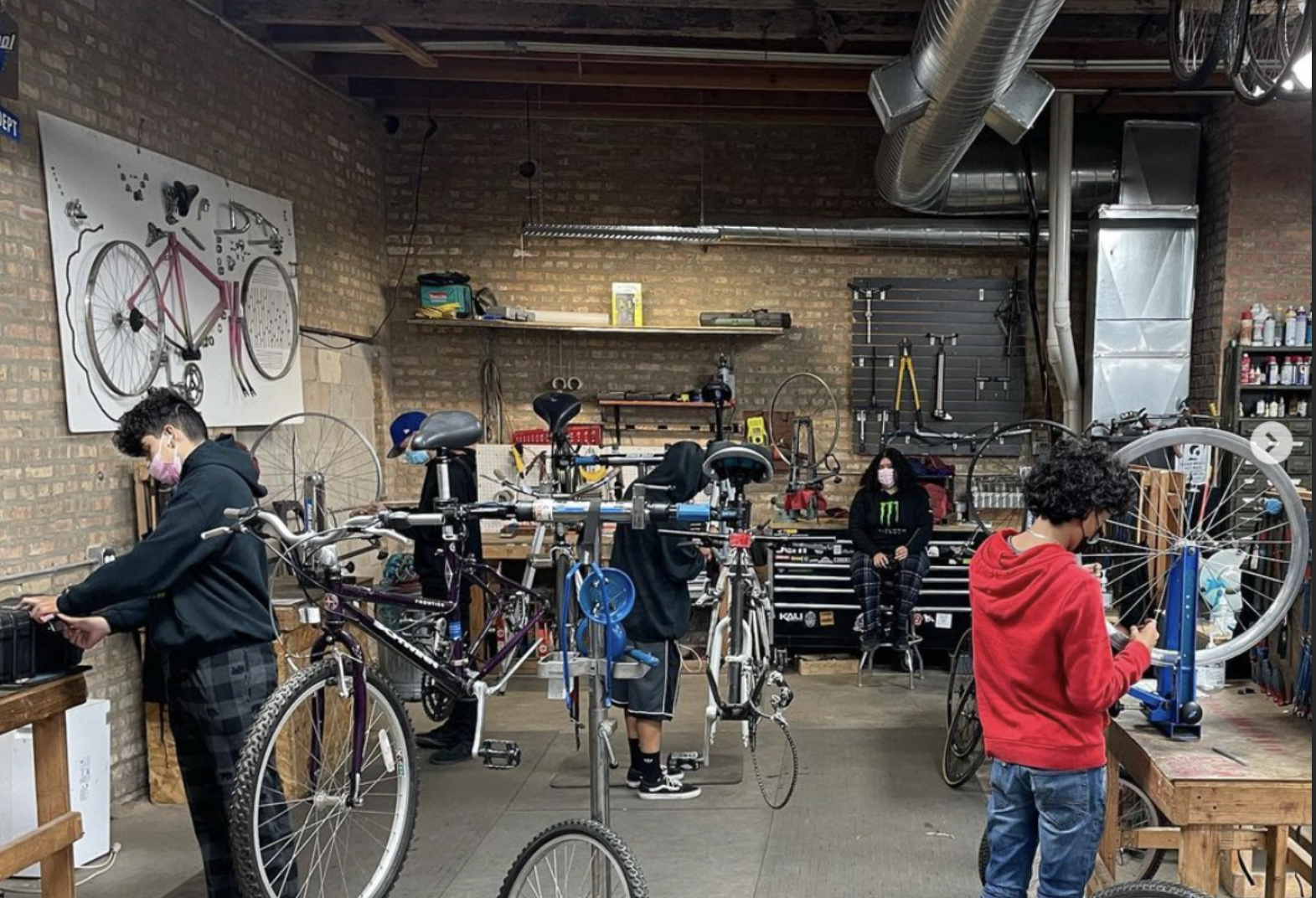Lack of Planning Along Orange Line Resulted in Missed Opportunities
12:49 PM CDT on June 16, 2014

Ever since it opened in 1993, the CTA's Orange Line has become the public transit backbone of the Southwest Side, with over 60,000 rides on an average weekday. But unlike the patrons of many other 'L' lines, who step out of their neighborhood stations onto commercial streets lined with restaurants, shops, and other businesses, Orange Line riders are more likely to see bus turnarounds, parking lots, and forbidding industrial corridors.
A new report by a University of Chicago graduate student, presented at this year's Transportation Research Board meeting, suggests that those conditions are holding back the full potential of the city's investment – and has serious implications for the rest of the Chicagoland region. The paper, by Julie Cooper, a graduating masters student at the Harris School of Public Policy, looks at the Orange Line's effect on economic development in the neighborhoods around three stations: Western, Kedzie, and Pulaski.
It finds little evidence that the opening of the Orange Line brought job growth to the area around those stations, or that jobs in the area relocated to be near them. “Transit stations alone,” Cooper concludes, “will not definitely spur commercial development. Complementary and holistic planning is needed.”
The study identifies three factors that may be holding back job growth along the Orange Line. First, zoning was not updated when the line was built. Much of the land around the three stations studied is zoned for manufacturing, which prohibits the neighborhood-serving retail -- like corner stores, hardware stores, and restaurants -- that clusters around other 'L' stations all over the city. On top of that, most residential streets near stations were zoned to allow only single-family homes. This prevents the construction of three-flats and courtyard-sized buildings, which provide a large customer base that supports local businesses in other transit-oriented neighborhoods across the city.
Second, the stations were designed for riders to arrive by bus or car, not by foot. As a result, the entrances are often set back from the street, and face bus bays instead of sidewalks. That sort of isolation, writes Cooper, “will generally discourage riders from walking to and from the station and from patronizing nearby business establishments.” Interestingly, despite that design, a survey taken shortly after the line opened found that a quarter of Orange Line riders walked to the train – more than twice as many as the city had expected, if still a relatively low number.
Finally, because the neighborhoods around the Orange Line were built before the area had rapid transit access, they are much more car-oriented than communities that grew up around older 'L' lines. Population density is relatively low, which means fewer potential customers. Streets are wider and less pedestrian-friendly, with many existing businesses in strip malls or shopping centers that are most easily accessed by driving. That environment puts transit-oriented businesses, which depend on walk-in customers, at a disadvantage.
These findings could be a wake-up call for Chicago, where officials from Mayor Rahm Emanuel to local aldermen have promoted transit investments, in part to boost the local economy -- but have frequently failed to create the kind of conditions that allow for that growth. Just last year, the Center for Neighborhood Technology released a study that found Chicago was the only American city with an extensive rail transit system that saw a decline in development around its transit stations, even as the property values around those stations grew faster than in the region as a whole.
There are some signs of progress: the transit-oriented development (TOD) ordinance passed last year reduces parking requirements for new residential buildings near rapid transit stations, which makes construction less expensive and encourages the new occupants to ride transit. A handful of new projects, from the “Tower of Pizza Hut” to the mixed-use development on the Children's Memorial Hospital site in Lincoln Park, show a new willingness on the part of some aldermen to allow denser buildings near train stations, helping to boost ridership and support local businesses. And for several years, the city's Department of Transportation has been carrying out “road diets” on streets that are dangerous or unpleasant to walk on, which often includes widening sidewalks, planting trees, and discouraging speeding traffic.
But the TOD ordinance only applies to buildings within 600 feet, or about one block, of a station entrance (or 1,200 feet along officially designated “pedestrian streets”), which greatly limits its effect. Moreover, the wrangling over a recently-proposed seven-story apartment building near the corner of Milwaukee and Division shows that it's still a struggle for aldermen to balance the expectations of some of their constituents with the benefits of transit-oriented growth and economic development. And many 'L' stations still deposit their riders in areas hostile to walking, whether along the Orange Line or along the highway-median stretches of the Blue and Red Lines.
That's not to mention the suburbs, where extremely low frequencies, pedestrian-hostile street design, and restrictions on development hold down growth around Metra stations.
In many ways, of course, the Orange Line has been a success. Ridership is high and growing, earning it accolades in a recent FTA report, and previous studies have shown that it has raised property values near its stations. But this report shows that on at least one key metric – job growth and economic development – it's not accomplishing all that it could. With an unemployment rate well above the nation's average, Chicago can't afford to leave that kind of opportunity on the table. Its leadership should take notice of these findings to make one of our region's greatest assets -- our transit system -- pay the kind of economic dividends Chicagoans need.
Stay in touch
Sign up for our free newsletter
More from Streetsblog Chicago
It’s electric! New Divvy stations will be able to charge docked e-bikes, scooters when they’re connected to the power grid
The new stations are supposed to be easier to use and more environmentally friendly than old-school stations.
Today’s Headlines for Tuesday, April 23
Communities United: Reports of Bikes N’ Roses’ death have been greatly exaggerated
According to the nonprofit shop's parent organization, BNR has paused its retail component, but is still doing after-school programming and looking for new staff.



